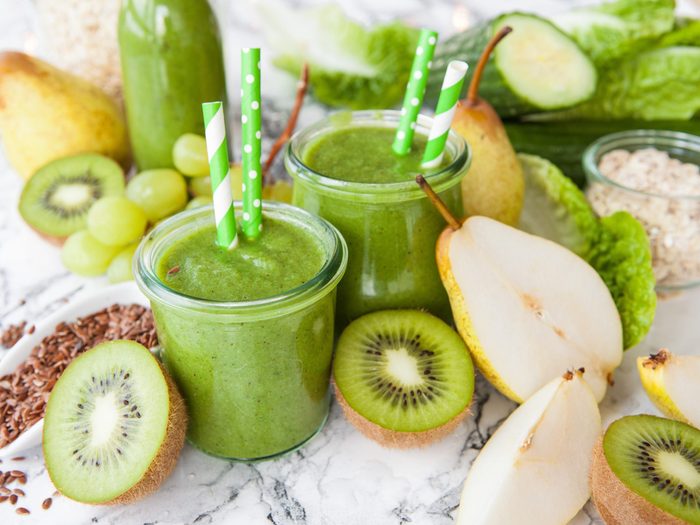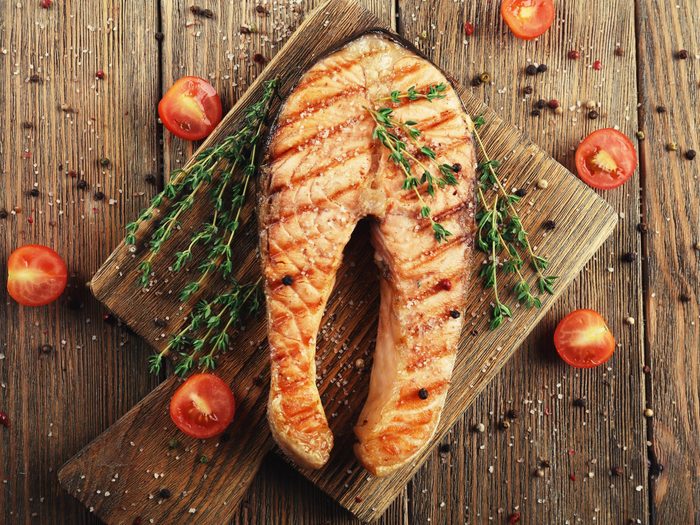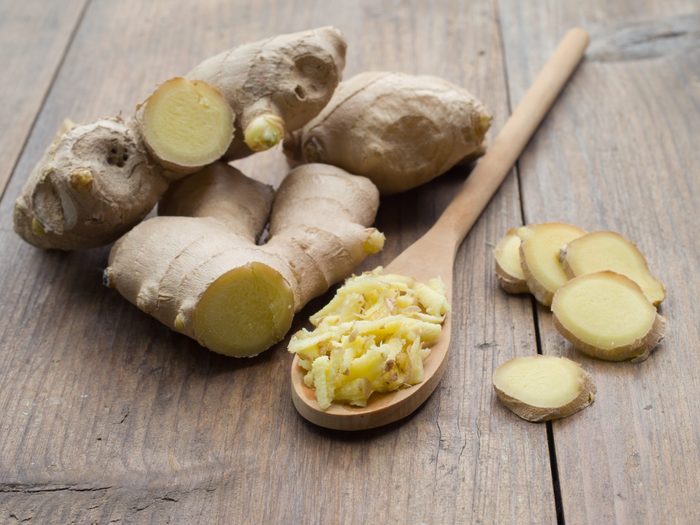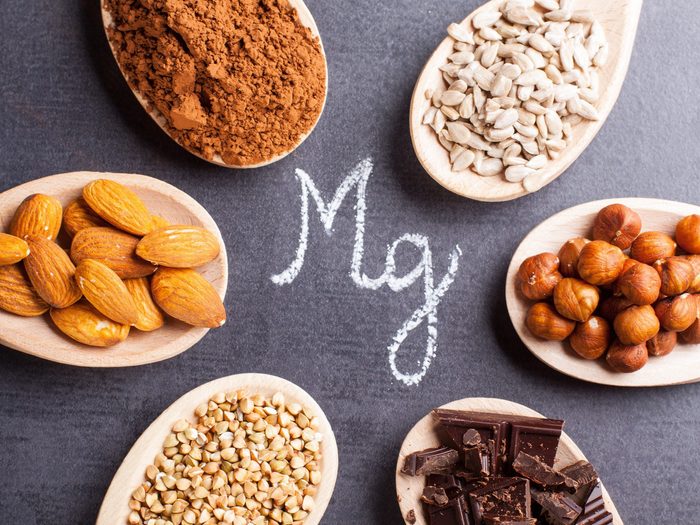
1. Fruits, Vegetables, and Legumes
Fruits, vegetables, and legumes all contain plant estrogens that blunt the negative effects of the estrogen our bodies naturally make. This may be particularly helpful for women who get migraines with their periods—which may be due to a sudden drop in estrogen. The reasoning goes, the higher your overall estrogen level is to begin with, the farther it can fall during the drop. The fibre in these migraine fighting foods helps by removing excess estrogen from the body along with waste, so it’s not recycled back into your bloodstream.
Another major plus of these foods: They’re low in fat. When you eat less fat, your body makes less estrogen!
Aim for: Getting the recommended 7 to 10 daily servings of fruit and vegetables.

2. Fatty Fish
You know it as heart-healthy fare, but salmon and other fatty fish (like mackerel, trout, and herring) just may help control migraines, too. These fish are rich sources of the omega-3 fatty acids EPA and DHA.
Some preliminary research on these anti-inflammatory compounds done at the University of Cincinnati showed that when they were taken in supplement form, they appeared to reduce the frequency and severity of migraines in some people over the course of six weeks.
Aim for: The University of Cincinnati study used capsules containing 300 mg of EPA and DHA and 700 mg of other oils. Four 125-gram servings of fatty fish a week would provide about the same amount of the beneficial fish oils used in the study.

3. Coffee
Although caffeine may trigger migraines in some people, when a migraine strikes, a few cups of coffee do help relieve the pain. Caffeine is so effective at helping to shrink swollen blood vessels in the brain, it’s one of the key ingredients (together with acetaminophen and aspirin) in over-the-counter migraine medicines.
Aim for: A cup or two when a migraine hits.
Check out 8 More Ways to Relieve a Migraine!

4. Ginger
Research shows that this warming spice contains some potent compounds that are similar to the ones in non-steroidal anti-inflammatory drugs. It may work against migraines by blocking inflammatory substances called prostaglandins. Ginger hasn’t been rigorously tested for headache relief, but even if it doesn’t control migraines, it should help relieve the nausea that often comes with them.
Aim for: There’s no recommended dose, but you might start using powdered or fresh ginger liberally in cooking or ordering dishes flavoured with ginger when dining out. Or when a migraine strikes, mix in a few teaspoons of powdered ginger in a glass of water and drink it every few hours to help alleviate the pain. You can also suck on dried ginger candy!

5. Magnesium-Rich Foods
Whole grains, beans, and leafy dark green vegetables are all high in magnesium, which research shows is often deficient in people who get migraines. Low levels of magnesium are thought to make the brain extra sensitive to migraine triggers.
Aim for: The recommended daily amount for magnesium is 310 to 320 mg for women and 400 to 420 mg for men. Aim for 400 to 700 mg daily to help control migraines if you’re truly deficient. Roasted pumpkin seeds are among the richest sources of magnesium, with about 151 mg for every 30 grams. Brazil nuts (107 mg per 30 g) and almonds (78 mg per 30 g) are good sources too. You can also try halibut, which contains 91 mg in a 90-gram portion.
Check out 15 Ways to Stop Migraines Before They Start!